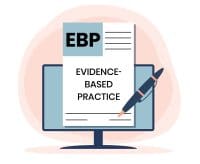Writers might not have superpowers like Superman, Wonder Woman, and others in the DC Universe, but we can use powers (tools) to improve the effectiveness of our writing. One of the most powerful tools—and one of the easiest to learn—is parallelism.
What is parallelism?
Parallelism, or parallel structure, refers to keeping words and phrases within a sentence or a bulleted or numbered list consistent; doing so conveys that the items have the same level of importance. Here’s an example:
Not parallel: The parts of the nursing process are assessing, to plan, implement, and evaluating.
Parallel: The parts of the nursing process are assessing, planning, implementing, and evaluating.
Note that in the first example, the words in italics don’t have the same structure. For example: implement and evaluating don’t match. But in the parallel version, all the italicized words match, including implementing and evaluating.
Here’s another example:
Not parallel: The patients warmed up, were asked to walk 2 miles, and a notebook was used to record the activity.
Parallel: The patients warmed up, walked 2 miles, and recorded their activity.
Notice that in the parallel version, the verbs are still in the past tense (as they were in the nonparallel version), but because the format for each is the same (“ed” at the end), the sentence is easier to read. The parallel version has the additional advantage of clarifying who recorded the activity.
Why parallelism matters
Parallel structure makes it much easier for a reader to comprehend your work. In both of the examples above, the nonparallel example is harder to follow, so, in turn, the reader will have to worker harder to understand what’s written. A piece of friendly advice I share with authors is, “Never make the readers work.”
Consider that readers make decisions about what to read based on value, which consists of the benefits of the information provided vs. the effort (“cost”) it takes to get the author’s point. (Think of how value analysis committees evaluate products—the process is similar.) Anything you can do to enhance benefit and reduce cost will improve the likelihood that the reader will read what you write.
More examples
Here are two other areas where parallel structure is valuable.
- Bulleted or numbered lists. Here’s an example.
Not parallel
Research supports providing staff with a specific oral care protocol for patients to reduce the incidence of hospital-acquired pneumonia.
- Use a soft-bristle toothbrush or an electric suction toothbrush if the patient can’t brush his or her own teeth.
- The toothpaste should contain sodium bicarbonate
- It’s important to examine the oral cavity, including the teeth and gingiva, thoroughly; for patients receiving antibiotics, watch for oropharyngeal candidiasis
- Ensure that patients’ dentures are cleaned after each meal and before bedtime
- A mouthwash without alcohol is preferred to complete oral care.
Parallel
Research supports providing staff with a specific oral care protocol for patients to reduce the incidence of hospital-acquired pneumonia. Nurses should:
- Use a soft-bristle toothbrush or an electric suction toothbrush if the patient can’t brush his or her own teeth
- Use toothpaste that contains sodium bicarbonate
- Examine the oral cavity, including the teeth and gingiva, thoroughly; for patients receiving antibiotics, watch for oropharyngeal candidiasis
- Ensure that patients’ dentures are cleaned after each meal and before bedtime
- Use a mouthwash without alcohol to complete oral care.
In the parallel case, each bullet point starts with a verb (in italics). (The list is from the article “Preventing hospital-acquired pneumonia,” published in the February issue of American Nurse Journal.)
- Two related ideas joined by “and,” “or,” or “but.”
Not parallel
Staff satisfaction improved by 50%, but physician satisfaction didn’t improve as much—only 10%.
Parallel
Staff satisfaction increased by 50%, but physician satisfaction decreased by only 10%.
Wield your power!
Don’t hesitate to start using your new power to improve your writing. You’ll soon find that parallel structure becomes second nature to you.
For more information, see Anatomy of Writing for Publication for Nurses, 3rd ed.



















